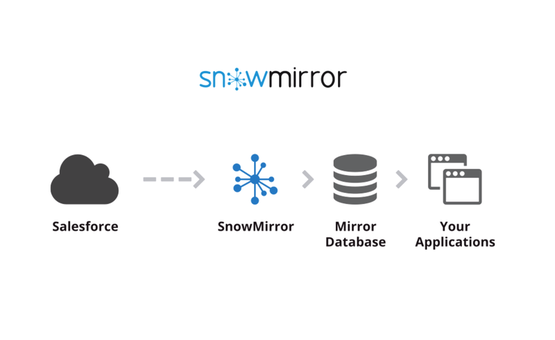Salesforce is the leading cloud platform for automating sales and customer service processes. But Salesforce is not only about Service Cloud or Sales Cloud products. It is a real cloud platform for a wide variety of enterprise solutions. As a result, every Salesforce instance contains valuable, important or critical data.
If Salesforce is being implemented by a large organization with many other applications, existing IT environments and preferred company-wide solutions, then the Salesforce’s single system of record is suddenly becoming only another piece of software, another data source.
By its cloud nature, it is much more complicated to work with the Salesforce data outside of the cloud and making integrations directly with the production Salesforce instance might complicated, expensive or even impossible especially while dealing with bulk data. This is why many Salesforce customers think of building their own read replicas to be able to work with the data on-premise.
Specifically, here are 3 reasons to keep an independent copy of your Salesforce data:
1. Reporting and Business Intelligence
What if you have an existing data warehouse? Do you have a standard reporting environment based on Tableau or Cognos? In this case, Salesforce is just one of the data sources for the reporting team and accessing the cloud instance is simply not flexible enough. Having a copy of the Salesforce data in a more traditional relational on-premise database such as Oracle or SQL Server makes everything much easier.
One approach is to connect the reporting tool directly to the mirror database, the other approach is to use the replica as a staging area for further ETL processing such data mart loads or data blending.
2. Simplified Integrations
Salesforce data is important for many other applications within an IT environment of a company. Other tools need to work with the contacts, cases, leads and other objects. The experience is that vast majority of applications working with Salesforce data does not modify the data at all. These are just read-only Salesforce integrations.
In this case, the best practice is to read the data from a mirror database instead of using Salesforce API to get the same records again and again.
3. Disaster Recovery and Business Continuity
Business Continuity and Disaster Recovery are closely related practices that describe an organization’s preparation for unforeseen risks to continued operations. Many organizations are required to have such plans. Having the Salesforce data in a separate location is the vital part of these plans to cover scenarios such as “What if there is no Salesforce anymore?”.
Replicate Salesforce Data with SnowMirror
SnowMirror is a smart replication tool for Salesforce. The data is loaded from a Salesforce instance and stored in a relational database such as Oracle or Microsoft SQL Server, installed in a local environment. SnowMirror is simple to install and configure. Follow the quick start guide to set up SnowMirror just in 10 minutes.
